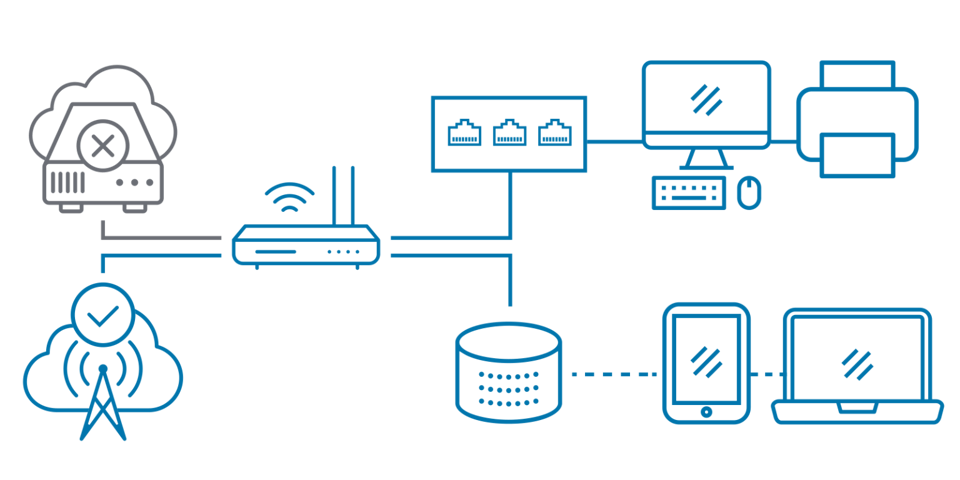Service Level Agreements (SLAs) can vary amongst Unified communications as a service providers. Generally, a solution that guarantees 99.9% of uptime allows about 9 hours of downtime per year, whereas a service that guarantees 99.999% only allows for about 6 minutes of downtime per year. It is no surprise that reliability of your service plays a big factor in customer operational efficiency and satisfaction.
No Internet connection is failproof, and savvy companies make considerations about a UCaaS provider architecture design with automatic failover that proves effective in the event of disaster recovery. By adding an additional data center, you are ensuring communications flow seamlessly for your clients, giving your company a competitive advantage.
As a UcaaS provider, you know that many organizations today—especially hospitals with mission-critical needs—rely on on-premises systems that allow them to use their existing legacy equipment. Having a system based on a specific location means that any damage caused by fire or flood, restricted building access, or telephone line damage may cause communication to be restricted. Even if you failover to another piece of hardware in the same location, it is not sufficient for enterprise disaster recovery purposes. Designing redundancy into the network eliminates any single point failure.
A pure cloud architecture in which the system is completely hosted in the cloud is the most future-proof set-up; it is flexible and disaster-proof, thanks to built-in redundancy. A hybrid system, that combines on-premises and cloud-based architecture, is also an excellent solution, allowing organizations to use their existing equipment while adding capabilities and facilitating future expansion. As long as you are able to provide that backup by having multiple data centers which can be used for failover if necessary, clients with any architecture design can be equally protected.
When outage on the primary link fails, your customers are left in the dark with a potential loss of revenue. Providing at least two active connections, with a priority traffic to route through a primary connection and default allocation to a secondary connection, is the right way to go. When the outage is repaired and the link is restored, you can automatically go back to the original policy configuration. This behind-the-scenes process ensures essential services will run constantly, giving your clients peace of mind.

As a connectivity and failover provider for UCaaS, we understand how to address the needs of your clients. We also consider your revenue model and make available data packages to help you pay only for what you need, while you bill your customers a monthly fee for failover services.
Our cloud-based malware and defense tools can also merge with your existing security architecture to provide additional security during an outage.
In addition to becoming your failover provider of choice, Kajeet solutions provide additional benefits such as data pooling, real-time reporting and alerts for minimized fraud prevention, filtering and device monitoring.


